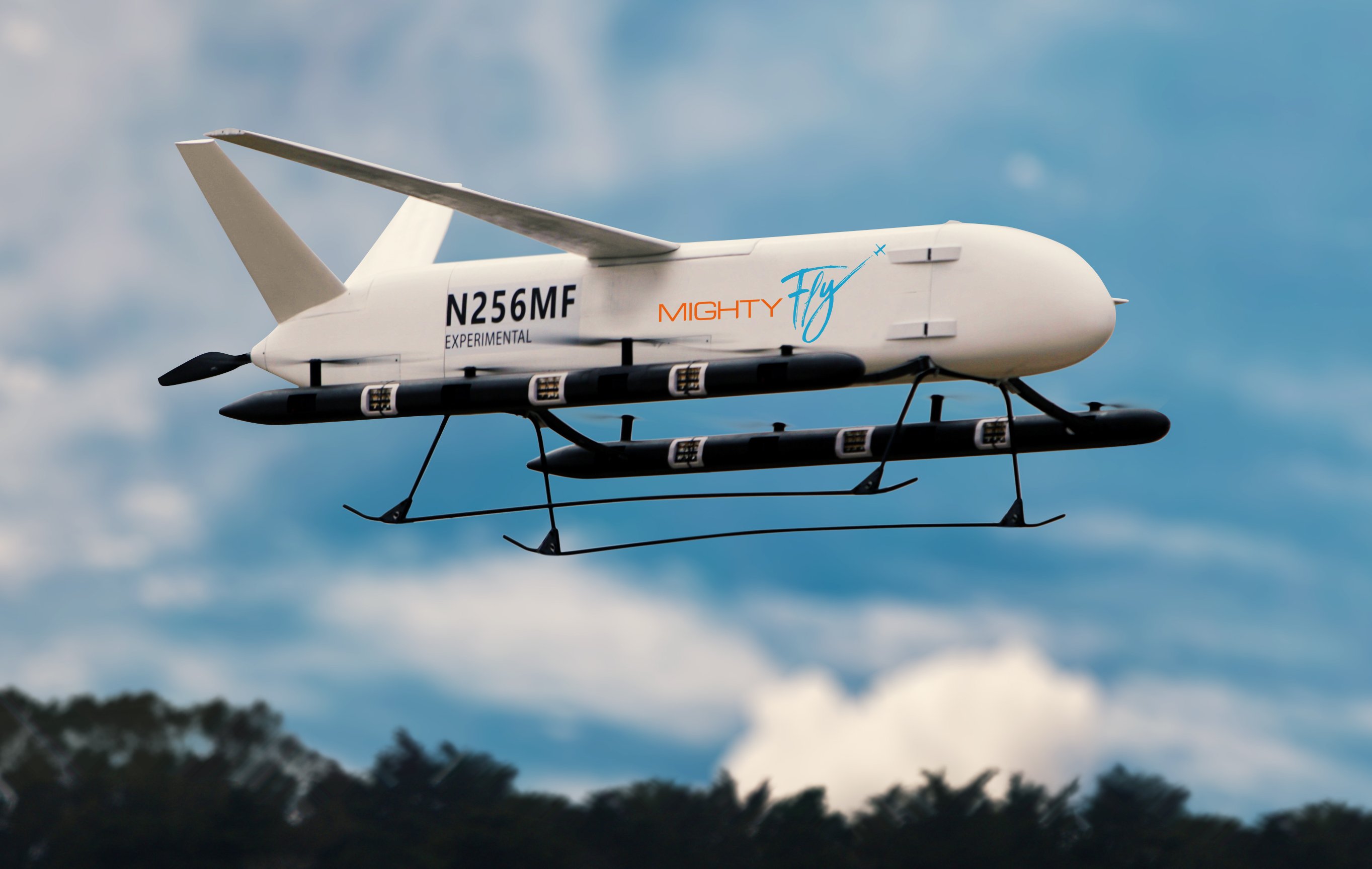Click Here to View This Page on Production Frontend
Click Here to Export Node Content
Click Here to View Printer-Friendly Version (Raw Backend)
Note: front-end display has links to styled print versions.
Content Node ID: 419426
MightyFly has completed the first test flights with its MF-100 autonomous cargo aircraft and is preparing to start piloted freight delivery operations in 2023. On February 17, the company reported that the remotely monitored flights have been conducted over recent months in the San Francisco Bay Area under an FAA special airworthiness certificate issued last year.
The initial vertical takeoff and landing hover flights at Half Moon Airport were made in winds of up to 15 knots.” The MightyFly engineering team has been checking on the redundancy performance of the MF-100’s hybrid-electric propulsion system and its sensors as well as conducting stress tests with some payload onboard.
CEO and founder Manal Habib told FutureFlight that the next phase of testing will begin within a few months to demonstrate the transition to horizontal cruise flight over longer ranges. The MF-100 is expected to have a payload of 100 pounds on flights of up to 600 miles at 150 mph, and the company already has plans for a larger model that could carry 500 pounds.
MightyFly is planning to launch door-to-door freight delivery services with it operating fleets of MF-100s in various locations. This might involve charges based on weight, volume, and distance or providing customers with dedicated aircraft that could be based at facilities such as warehouses.
The company estimates the vehicle will need a landing area of just 20 by 20 feet, as part of “transfer stations” where cargo can be automatically loaded and unloaded via the MF-100’s nose and using a conveyor belt. When required, last-mile deliveries could then be made with electric ground vehicles.
According to Habib, she is now in talks with several prospective launch customers to be involved in a pilot project, now expected to start in 2023, to evaluate a logistics operation while continuing the flight testing. In addition to the U.S., early use cases could be in locations such as Singapore, Australia, and Japan.
“Over 20 Fortune 500 companies have validated MightFly’s autonomous logistics solution to their mid-mile inefficiencies,” Habib claimed. The company says that its automated loading process and the ability to replace multiple delivery legs with point-to-point connections will significantly drive down delivery and supply chain costs.
“Loading and unloading cargo is traditionally a very labor-intensive process,” said John Formisano, a retired FedEx executive who now serves on MightyFly’s board. “MightFly will simplify this process, eliminating costly errors and delays.”
The MF-100’s propulsion system now consists of an internal combustion engine, as well as electric motors. The engine recharges batteries in flight to minimize the need for ground infrastructure for this purpose.
Under current FAA rules, the crews remotely monitoring flights are fully qualified pilots who are also trained in operating drones. “Effectively, they are IFR pilots and the MF-100 has very similar instruments to a normal aircraft,” Habib explained.
Since completing a $5.1 million seed funding round in 2021, MightFly has increased the size of its team fourfold. It is in talks with some prospective investors ahead of a possible further funding round next year.
The company has posted a video showing the MF-100 prototype flying and illustrating its proposed operating model.
